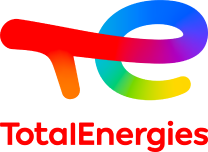José A.M. Demattê 1 2 , Raul R. Poppiel 1 2 , Jean Jesus Macedo Novais 1 , Nícolas Augusto Rosin 1 , Budiman Minasny 3 , Igor Y. Savin 4 5 , Sabine Grunwald 6 , Songchao Chen 7 8 , Yongsheng Hong 9 , Jingyi Huang 10 , Sabine Chabrillat 11 12 , Quirijn de Jong van Lier 13 , Eyal Ben-Dor 14 , Cecile Gomez 15 16 , Zhang Ganlin 17 , Merilyn Taynara Accorsi Amorim 1 , Letícia Guadagnin Vogel 1 , Jorge Tadeu Fim Rosas 1 , Robert Milewski 11 , Asa Gholizadeh 18 , Arseniy V. Zhogolev 4 , José Padarian Campusano 3 , Yuxin Ma 3 19 , Ho Jun Jang 3 , Rudiyanto 20 , Changkun Wang 9 , Rodnei Rizzo 13 , Nikolaos Tziolas 6 , Nikolaos Tsakiridis 21 , Masakazu Kodaira 22 , D. Nagesh Kumar 23 , Subramanian Dharumarajan 24 , Yufeng Ge 25 , Emmanuelle Vaudour 26 , Shamsollah Ayoubi 27 , James Kobina Mensah Biney 28 , Abdelaziz Belal 29 , Salman Naimi Marandi 27 , Najmeh Asgari Hafshejani 27 , Eleni Kalopesa 21 , Danilo Cesar Mello 1 , Marcio Rocha Francelino 30 , Elsayed Said Mohamed Salama 5 29 , Asmaa Abdelbaki 11 31
- 1Department of Soil Science, Luiz de Queiroz College of Agriculture, University of São Paulo, Piracicaba 13418-900, São Paulo, Brazil
- 2Center for Carbon Research in Tropical Agriculture (CCARBON), Luiz de Queiroz College of Agriculture, University of São Paulo, Piracicaba 13418-900, São Paulo, Brazil
- 3Sydney Institute of Agriculture & School of Life and Environmental Sciences, The University of Sydney, Sydney, New South Wales, 2006, Australia
- 4V.V. Dokuchaev Soil Science Institute, Moscow 119017, Russia
- 5Department of Environmental Management, Institute of Environmental Engineering, RUDN University, Moscow, Russia
- 6Department of Soil, Water, and Ecosystem Sciences, University of Florida, Gainesville, 32611, Florida, USA
- 7ZJU-Hangzhou Global Scientific and Technological Innovation Center, Zhejiang University, Hangzhou 311215, China
- 8College of Environmental and Resource Sciences, Zhejiang University, Hangzhou 310058, China
- 9State Key Laboratory of Soil and Sustainable Agriculture, Institute of Soil Science, Chinese Academy of Sciences, Nanjing 211135, China
- 10Department of Soil and Environmental Sciences, University of Wisconsin – Madison, Madison, Wisconsin, 53706-1380, USA
- 11GFZ Helmholtz Centre for Geosciences, Telegrafenberg, 14473 Potsdam, Germany
- 12Leibniz University Hannover, Institute of Earth System Science, Soil science section, 30419 Hannover, Germany
- 13Center of Nuclear Energy in Agriculture (CENA), University of São Paulo, São Paulo 13416-903, Brazil
- 14Department of Geography, Porter School of Environmental and Earth Sciences, Faculty of Exact Science, Tel Aviv University, Tel Aviv 6997801, Israel
- 15LISAH, University Montpellier, IRD, INRAE, Institut Agro, AgroParisTech, 34060 Montpellier, France
- 16Indo-French Cell for Water Sciences, IRD, Indian Institute of Science, Bengaluru 560012, India
- 17Institute of Soil Science, Chinese Academy of Sciences, Nanjing 210008, China
- 18Department of Soil Science and Soil Protection, Faculty of Agrobiology, Food and Natural Resources, Czech University of Life Sciences Prague, 16500 Prague, Czech Republic
- 19NSW Department of Climate Change, Energy, the Environment and Water, Parramatta, NSW 2150, Australia
- 20Program of Crop Science, Faculty of Fisheries and Food Science, Universiti Malaysia Terengganu, Kuala Nerus 21030, Malaysia
- 21Aristotle University of Thessaloniki, 54124 Thessaloniki, Greece
- 22Institute of Agriculture, Tokyo University of Agriculture and Technology, Fuchu, Tokyo 183-8509 (P4-37), Japan
- 23Department of Civil Engineering, Indian Institute of Science Bangalore, Bengaluru 560012, India
- 24ICAR – National Bureau of Soil Survey and Land Use Planning, Regional Centre, Bangalore 560024, India
- 25Department of Biological Systems Engineering, University of Nebraska-Lincoln, Lincoln, Nebraska 68583, USA
- 26Université Paris-Saclay, INRAE, AgroParisTech, UMR EcoSys, 91120 Palaiseau, France
- 27Department of Soil Science, Isfahan University of Technology, Isfahan 84156-83111, Iran
- 28Centre for Earth Observation Science (CEOS), University of Manitoba, Winnipeg R3T 2N2, Manitoba, Canada
- 29National authority for remote sensing and space sciences NARSS, Cairo, Egypt
- 30Department of Soils, Federal University of Viçosa, Avenue Peter Henry Rolfs, Viçosa 36570-900, Brazil
- 31Soils and Water Department, Faculty of Agriculture, Fayoum University, Fayoum 63514, Egypt
Highlights
- Powerful soil-vegetation satellite proxies generated 90-m soil-property maps.
- 64% of the world’s topsoil is sandy and highly degradable.
- Global topsoil stores 900 Gt of carbon, of which 54% is in natural vegetation.
- Tillage positively affects fertility by making nutrients available.
- Tillage negatively affects soil health by depleting carbon.
- The top 10 largest countries collectively store 75% of the global carbon stock.
Abstract
Soil has garnered global attention for its role in food security and climate change. Fine-scale soil-mapping techniques are urgently needed to support food, water, and biodiversity services. A global soil dataset integrated into an Earth observation system and supported by cloud computing enabled the development of the first global soil grid of six key properties at a 90-m spatial resolution. Assessing them from environmental and socio-economic perspectives, we demonstrated that 64% of the world’s topsoils are primarily sandy, with low fertility and high susceptibility to degradation. These conditions limit crop productivity and highlight potential risks to food security. Results reveal that approximately 900 Gt of soil organic carbon (SOC) is stored up to 20 cm deep. Arid biomes store three times more SOC than mangroves based on total areas. SOC content in agricultural soils is reduced by at least 60% compared to soils under natural vegetation. Most agricultural areas are being fertilized while simultaneously experiencing a depletion of the carbon pool. By integrating soil capacity with economic and social factors, we highlight the critical role of soil in supporting societal prosperity. The top 10 largest countries in area per continent store 75% of the global SOC stock. However, the poorest countries face rapid organic matter degradation. We indicate an interconnection between societal growth and spatially explicit mapping of soil properties. This soil-human nexus establishes a geographically based link between soil health and human development. It underscores the importance of soil management in enhancing agricultural productivity and promotes sustainable-land-use planning.
Keywords
soil security; digital soil mapping; remote sensing; carbon sequestration; soil health







